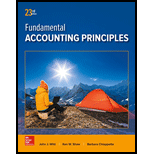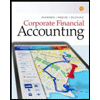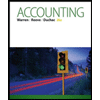
Concept explainers
Problem 13-1B
C2 P1 
Weiss Company is incorporated at the beginning of this year and engages in a number of transactions. The following journal entries impacted its stockholders’ equity during its ?rst year of operations.
| a. | Cash ………………………………………………………………………………… | 120,000 | |
| Common Stock, $1 Par Value ………………………………………… | 120,000 | ||
| Paid-In Capital Excess of Par Value, Common Stock ………….. | 117,000 | ||
| b. | Organization Expenses ……………………………………………………… | 40,000 | |
| Common Stock, $1 Par Value ……………………………………………. | 1,000 | ||
| Paid-In Capital Excess of Par Value, Common Stock …………… | 39,000 | ||
| c. | Cash ………………………………………………………………………………….. | 13,300 | |
| 8,000 | |||
| Building …………………………………………………………………………….. | 37,000 | ||
| Nets Payable …………………………………………………………………….. | 18,300 | ||
| Common Stock, $1 Par Value ……………………………………………. | 800 | ||
| Paid-In Capital Excess of Par Value, Common Stock …………… | 36,200 | ||
| d. | Cash ………………………………………………………………………………….. | 60,000 | |
| Common Stock, $1 Par Value ……………………………………………. | 1,200 | ||
| Paid-In Capital Excess of Par Value, Common Stock …………… | 58,800 |
Required
1. Explain the transaction(s) underlying each
2. How many shares of common stock are outstanding at year-end?
3. What is the amount of minimum legal capital (based on par value) at year-end?
4. What is the total paid-in capital at year-end?
5. What is the book value per share of the common stock at year-end if total paid-in capital plus
Check (2) 6,000 shares
(3) $6,000
(4) $260,000
Want to see the full answer?
Check out a sample textbook solution
Chapter 13 Solutions
Fundamental Accounting Principles
- Please provide solution for this general accounting questionarrow_forwardIf the materials price variance is $3000 F and the materials quantity and labor variances are each $2700 U, what is the total materials variance? a. $2700 U. b. $300 F. c. $3150 U. d. $3000 F.arrow_forwardsub. general accountarrow_forward
- On July 1, 2022, Burrough Company acquired 136,000 of the outstanding shares of Carter Company for $15 per share. This acquisition gave Burrough a 25 percent ownership of Carter and allowed Burrough to significantly influence the investee's decisions. As of July 1, 2022, the investee had assets with a book value of $7 million and liabilities of $456,800. At the time, Carter held equipment appraised at $319,200 more than book value; it was considered to have a seven-year remaining life with no salvage value. Carter also held a copyright with a five-year remaining life on its books that was undervalued by $980,000. Any remaining excess cost was attributable to an indefinite-lived trademark. Depreciation and amortization are computed using the straight-line method. Burrough applies the equity method for its investment in Carter. Carter's policy is to declare and pay a $1 per share cash dividend every April 1 and October 1. Carter's income, earned evenly throughout each year, was $579,000…arrow_forwardGeneral Accountarrow_forwardPlease solve this general accounting issuearrow_forward
 Corporate Financial AccountingAccountingISBN:9781305653535Author:Carl Warren, James M. Reeve, Jonathan DuchacPublisher:Cengage Learning
Corporate Financial AccountingAccountingISBN:9781305653535Author:Carl Warren, James M. Reeve, Jonathan DuchacPublisher:Cengage Learning Cornerstones of Financial AccountingAccountingISBN:9781337690881Author:Jay Rich, Jeff JonesPublisher:Cengage Learning
Cornerstones of Financial AccountingAccountingISBN:9781337690881Author:Jay Rich, Jeff JonesPublisher:Cengage Learning College Accounting, Chapters 1-27AccountingISBN:9781337794756Author:HEINTZ, James A.Publisher:Cengage Learning,
College Accounting, Chapters 1-27AccountingISBN:9781337794756Author:HEINTZ, James A.Publisher:Cengage Learning, Accounting (Text Only)AccountingISBN:9781285743615Author:Carl Warren, James M. Reeve, Jonathan DuchacPublisher:Cengage Learning
Accounting (Text Only)AccountingISBN:9781285743615Author:Carl Warren, James M. Reeve, Jonathan DuchacPublisher:Cengage Learning



